Ficus bubu
Ficus bubu Warb.
Family: Moraceae
Common names: bubu fig, sulphur-barked fig, Swazi fig (Eng.); bubuvy, Swazi-vy (Afr.); intfombi (Siswati)
SA Tree No: 56
Introduction
Ficus bubu is a stunning tree that captivates with its lovely yellow-green bark, glossy dark green foliage, thorny branches, strong construction and interesting ecological purpose. This semi-deciduous tree, native to southern and tropical Africa, may grow to be up to 30 m tall, providing shade, shelter and food for both wildlife and humans, helping to preserve the region's biodiversity.
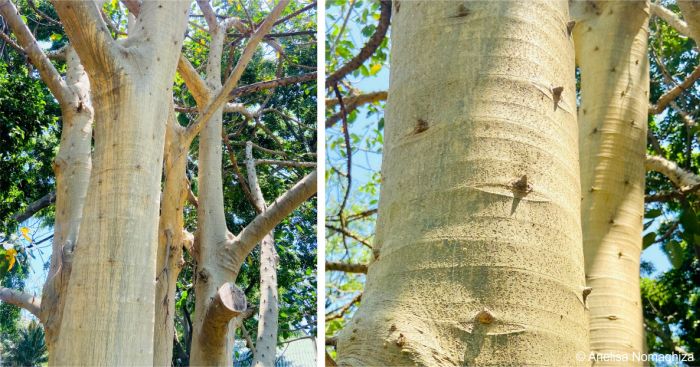
Description
Description
This is a semi-deciduous tree with a tall, straight trunk, that can grow up to 30 m in height. The bark appears smooth and light grey while young, but it roughens and becomes yellow-green with age. When injured, it emits a milky white sap, leaving a powdered white residue on your hands when you brush the dry bark. The tree's stem is often characterized by concentric rings or stepping-stone-like shapes, which are especially visible on older branches. These distinct marks are typical of the species. The branches are robust, spreading out to create a dense canopy, and, similar to the stem, they may have a smooth, grey look that becomes more textured with age. Sharp thorns cover both the stem and the branches, helping to defend the tree. Ficus bubu may be identified by its thorns and varying bark texture.
The dark green leaves have a smooth, glossy surface. They look lively and appealing because of their shiny appearance. Additionally, the leaves are leathery (coriaceous), elliptic to oblong, possessing a glabrous petiole that is 40–110 mm long, a smooth apex that appears short and acuminate to rounded, along with a base which is obtuse to rounded. The leaves are 120–300 × 60–230 mm, containing 6–8 pairs of horizontal veins that are frequently furcate far from the edge.
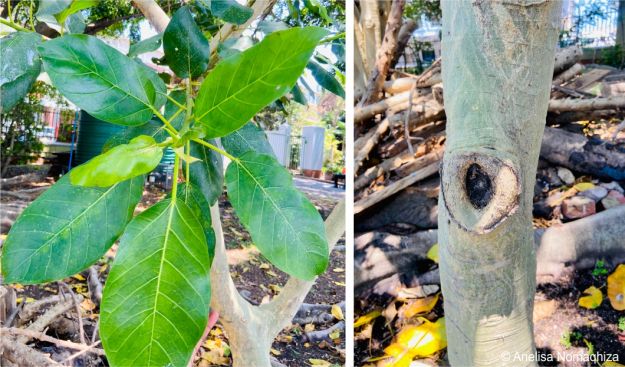
Flowers are tiny and concealed inside the fig fruit, and they are pollinated by fig wasps. The fruit is green at first and matures to a yellowish colour, drawing birds and other animals which eat the fruits and dipserse the small seeds. Fruits hang on short, spine-like, forward-pointing spikes on the branches and stem.
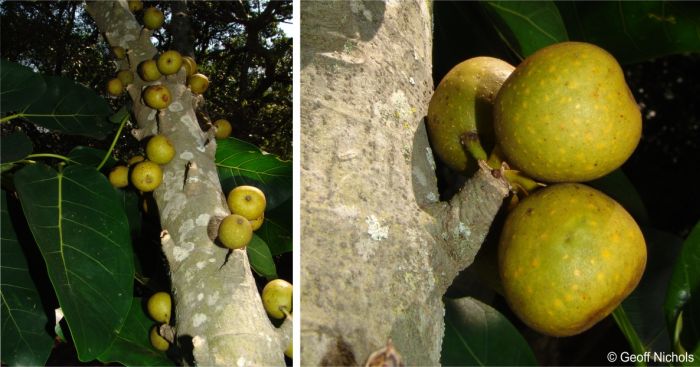
Conservation Status
Status
Ficus bubu is assessed as Least Concern (LC) on the Red List of South African Plants, meaning that there are no threats to its population in South Africa.
Distribution and habitat
Distribution description
Ficus bubu is indigenous to tropical and southern Africa, occurring from Senegal trough tropical Africa to Kenya and southwards to Angola, Namibia, Zambia, Zimbabwe, Mozambique, Eswatini, and South Africa, where it occurs in KwaZulu-Natal. It grows in a range of environments, but mostly in seasonally dry tropical forests.
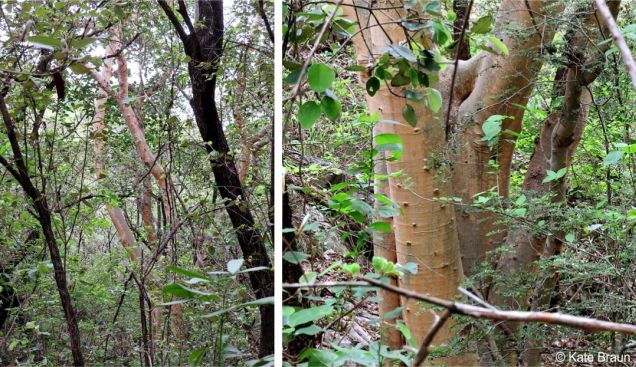
Derivation of name and historical aspects
History
The genus name Ficus is derived from the Latin word ficus, which means ‘fig’, referring to the distinctive fruit typical of species in this genus. The specific epithet bubu is thought to be the vernacular name for this plant in Congo, in one of the local languages in the area where the plant is indigenous. Its English and Afrikaans common names emphasize its distinguishing characteristics such as the fig fruit, bark, or geographical locality.
Ficus bubu is widely recognized as an important component of the African environment, respected for both its ecological significance and traditional usage. First named and described for science by the German botanist Otto Warburg in 1904, its presence in southern African regional floras demonstrates its long-standing value among natural and cultivated settings.
Ficus bubu belongs to the Moraceae, a family that plays an important role in tropical and subtropical environments and economies. The family contains more than 40 genera, including Artocarpus (breadfruit) and Morus (mulberry). The genus Ficus has around 800 species spread over the globe, including trees, shrubs and climbers. Many species, like Ficus bubu, are essential for animal survival, acting as keystone plants for their ecosystems. Their mutualistic association with fig wasps, which is crucial for pollination, demonstrates the complex ecological adaptations of plants in this genus.
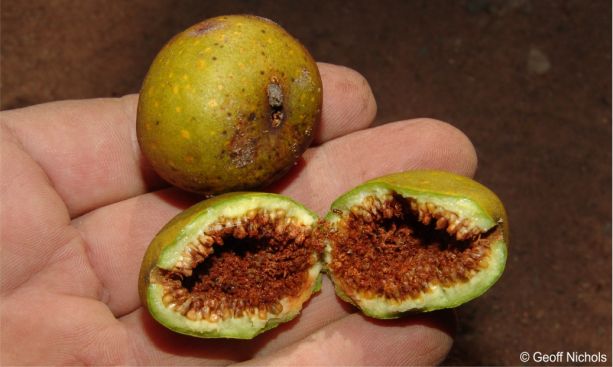
Ecology
Ecology
In the southern African region, Ficus bubu grows in high rainfall woodland, low altitude tree savanna, coastal forest, beside rivers and streams, and in wooded settings. It serves an important role in soil protection and supplies a key food supply for insects, birds and mammals via its fig fruits. The tree's flexibility and ecological value make it important for biodiversity conservation.
Ficus bubu has a unique relationship with fig wasps to achieve pollination. The wasps penetrate the fig's syconium and lay their eggs while fertilizing the flowers. This mutualistic adaptation supports the reproductive success of both the tree and the pollinator. Birds like the Dark-capped Bulbul (Pycnonotus tricolor) and Red-winged Starling (Onychognathus morio) are the main agents of seed dispersal in KwaZulu-Natal. They ingest the figs and disseminate seeds through their droppings, promoting germination.
The tree’s semi-evergreen habit and constant fruiting attract frugivores throughout the year. Its latex may discourage some herbivores, but not the fruit-eating seed dispersers. These interactions show Ficus bubu's ecological relevance in maintaining biodiversity and aiding forest regeneration.
Uses
Use
Ficus bubu is recognized for its varied applications in both traditional and practical settings. Its fruit is edible and provides a valuable resource to feed both humans and wildlife. Bark is occasionally utilized in traditional medicine due to its putative therapeutic characteristics. Furthermore, the bark fibres are able to be used to make ropes and other items. In horticulture, the tree is valued given its ornamental value and resilience, making it a popular choice for landscaping projects in parks and recreation areas, especially in subtropical locations.
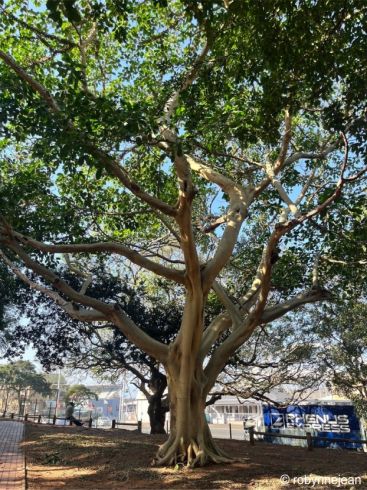
Growing Ficus bubu
Grow
Ficus bubu is easily cultivated from seeds or cuttings. Collect seeds from mature fruits, clean them, and plant them in a well-drained soil such as sand or loam. Maintain moderate wetness until germination, which might take many weeks. Cuttings can be rooted in sandy soil through the use of a rooting hormone. A mist house can help speed up the rooting process, but it is not required. Spring is the ideal period for propagation. When seedlings or rooted cuttings reach a few centimeters in height, they should be carefully transplanted into separate pots and grown on for a period until hardened, prior to planting out in the garden.
This fig grows in well-drained soil, favouring loam or sandy loam having a pH ranging from slightly acid to neutral. It thrives in full sunlight to semi-shade and needs moderate watering throughout the establishing period however, once fully established, it becomes drought-tolerant. Mulching near the base conserves soil moisture and suppresses weeds. Fertilize annually with a balanced organic compost. It tolerates slight frost but must be sheltered in colder climates. Prune sparingly to shape and maintain a clean canopy.
Ficus bubu makes an excellent shade tree in big gardens, parks and naturalized areas. Its thick foliage makes it an ideal screening tree or focal point. Planting near pavement or buildings is not recommended owing to its powerful roots. It is not ideal for containers or limited areas, but it works well with companion plants such as Aloidendron barberae and Carissa macrocarpa, which require equal amounts of water and sunlight.
The tree is largely pest-resistant, however it may attract scale bugs or aphids, which may be managed using insecticidal soap. Fungal infections are uncommon, but can arise in excessively damp circumstances; appropriate spacing with well-drained soil reduce hazards. Its fruits might draw birds, assisting in natural seed dispersal.
References
- Boon, R. 2010. Pooley's trees of eastern South Africa, a complete guide. Flora & Fauna Publications Trust, Durban.
- Geldenhuys, C. 2020. National List of Indigenous Trees Occuring in South Africa. Treetags. Online. https://treetags.co.za/national-list-of-indigenous-trees/.
- Plants of the World Online. Ficus bubu Warb. https://powo.science.kew.org/taxon/urn:lsid:ipni.org:names:852529-1. Accessed 30 Jan 2025.
- Braun, K. 2019-11. Observation of Ficus bubu, Mlawula Nature Reserve, Eswatini. iNaturalist. Online. https://www.inaturalist.org/observations/36372542.
- Raimondo, D., Von Staden, L., Foden, W., Victor, J.E., Helme, N.A., Turner, R.C., Kamundi, D.A. & Manyama, P.A. (eds) 2009. Red list of South African plants. Strelitzia 25. South African National Biodiversity Institute, Pretoria.
- robynnejean. 2024-08. Observation of Ficus bubu, Durban, KZN. iNaturalist. Online. https://www.inaturalist.org/observations/234571487.
- Trees for Zambia. Ficus bubu. https://treesforzambia.org/?page_id=1366. Accessed 23 Nov. 2024.
- Van Noort, S. & Rasplus, J.-Y. 2024. Ficus bubu.FigWeb. Online. https://www.figweb.org/ficus/subgenus_urostigma/section_galoglychia/subsection_caulocarpae/Ficus_bubu.htm.
- Wikipedia. Otto Warburg (botanist). https://en.wikipedia.org/wiki/Otto_Warburg_(botanist). Accessed 30 Jan 2025.
Credits
Anelisa Nomaqhiza
Kirstenbosch National Botanical Garden
February 2025
Acknowledgements: thanks to robynnejean, Kate Braun and Geoff Nichols for making their photos available.
Plant Attributes:
Plant Type: Tree
SA Distribution: KwaZulu-Natal
Soil type: Sandy, Loam
Flowering season: Winter
PH: Acid, Neutral
Flower colour: Green, Yellow
Aspect: Full Sun, Morning Sun (Semi Shade), Afternoon Sun (Semi Shade)
Gardening skill: Average
Special Features:
Horticultural zones
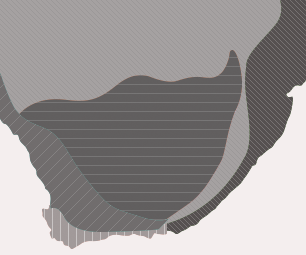







Rate this article
Article well written and informative
Rate this plant
Is this an interesting plant?
Login to add your Comment
Back to topNot registered yet? Click here to register.